Forklift Safety: 10 Rules to Prevent Accidents
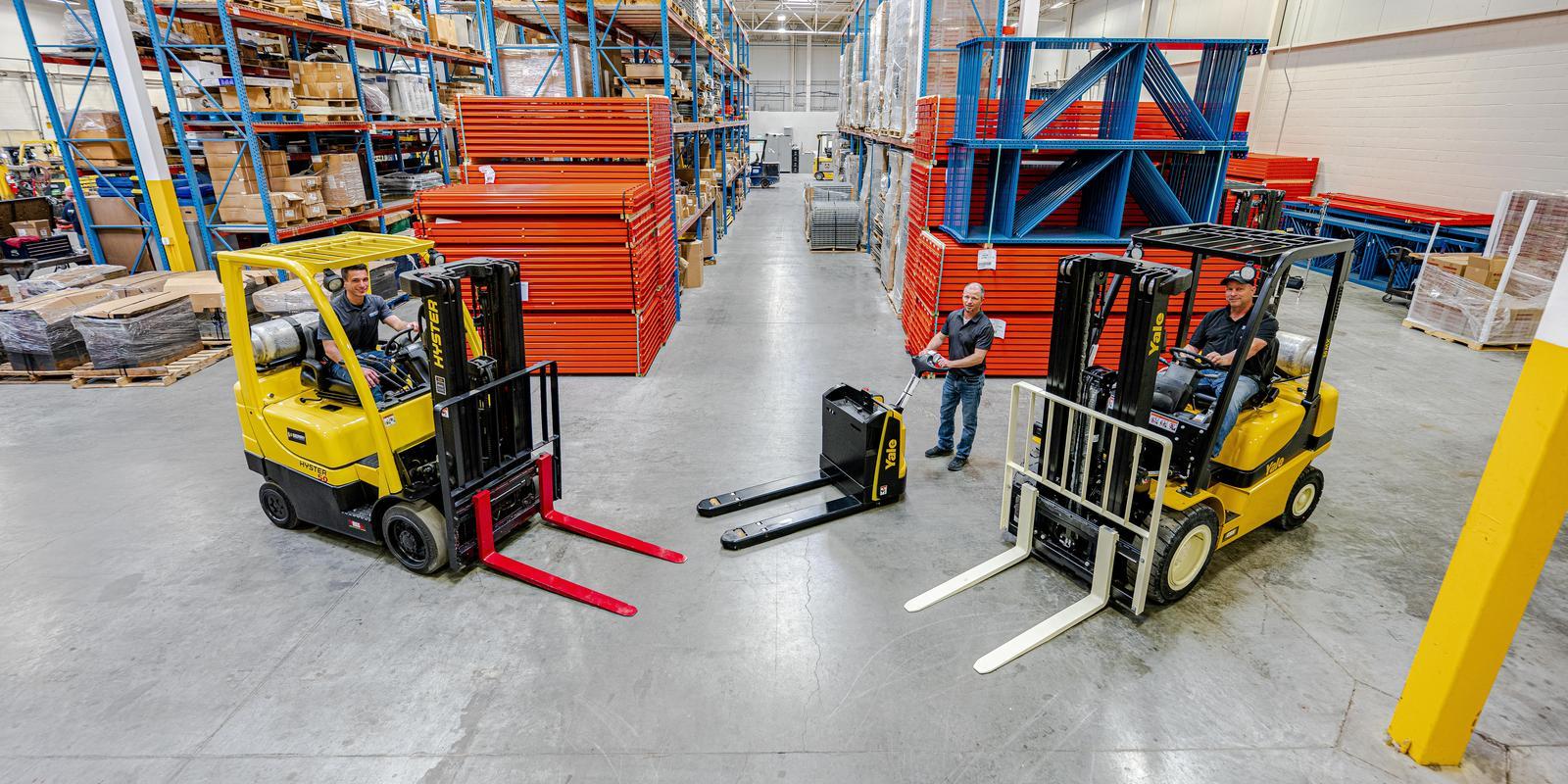
10 Rules for Forklift Safety in Your Warehouse
Forklift accidents are more common than you might expect. In their most recent report, the National Safety Council reported 24,960 non-fatal forklift-related incidents in 2021-2022 and 67 forklift-related fatalities in 2023.
Those are sobering metrics. But with the right training, a forklift operator can make a big difference to the efficiency and safety of your warehouse. Below is a guide to Occupational Safety and Health Administration (OSHA)’s top 10 rules for forklift safety.
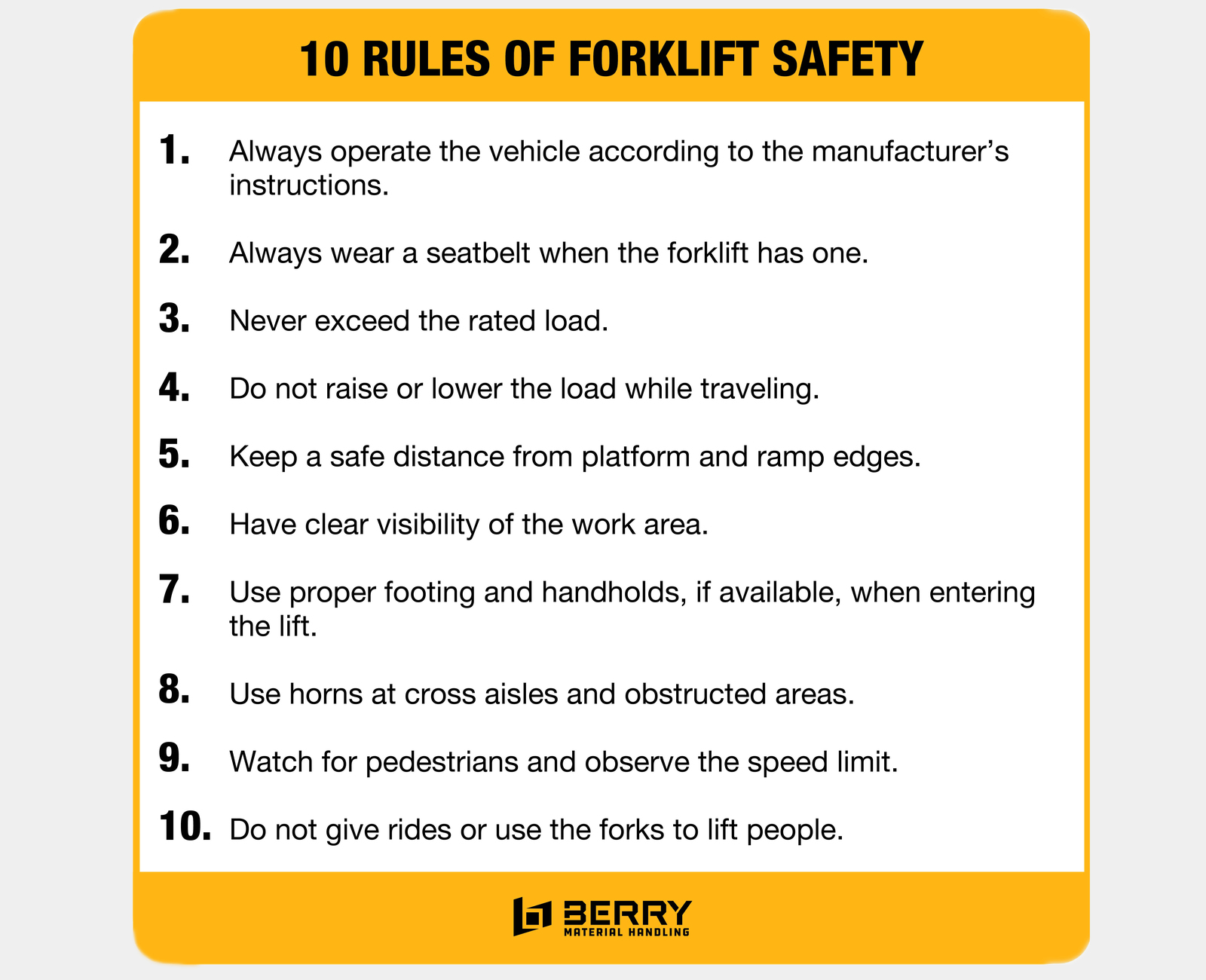
1. Always operate the vehicle according to the manufacturer’s instructions.
Every forklift runs a little bit differently. By following the manufacturer’s instructions, you can confidently remain in that forklift’s safety limits, which will help you avoid a safety problem.
2. Always wear a seatbelt when the forklift has one.
It may feel unnecessary for a quick run across the shop, but accidents can often happen in those moments. A seatbelt keeps you safe inside the cab or operator station. If a forklift tips during operation, we recommend that you stay put, hold on, and lean away from the fall.
3. Never exceed the rated load.
Know your forklift’s load chart. Overloading shifts the balance, which makes the machine harder to control. Secure the load and keep it stable. We would also recommend avoiding shortcuts like adding your own counterweight.
4. Do not raise or lower the load while traveling.
Travel only with the forks low to the ground (about 4–8 inches). Raising or lowering the forks while moving makes the load unstable. This can lead to dropped material and loss of control.
5. Keep a safe distance from platform and ramp edges.
Forklifts are heavy. One slip near an edge can become dangerous quickly. On ramps, keep the forks upslope when carrying a load. If empty, keep the counterweight upslope. That small habit will help you avoid rollbacks.
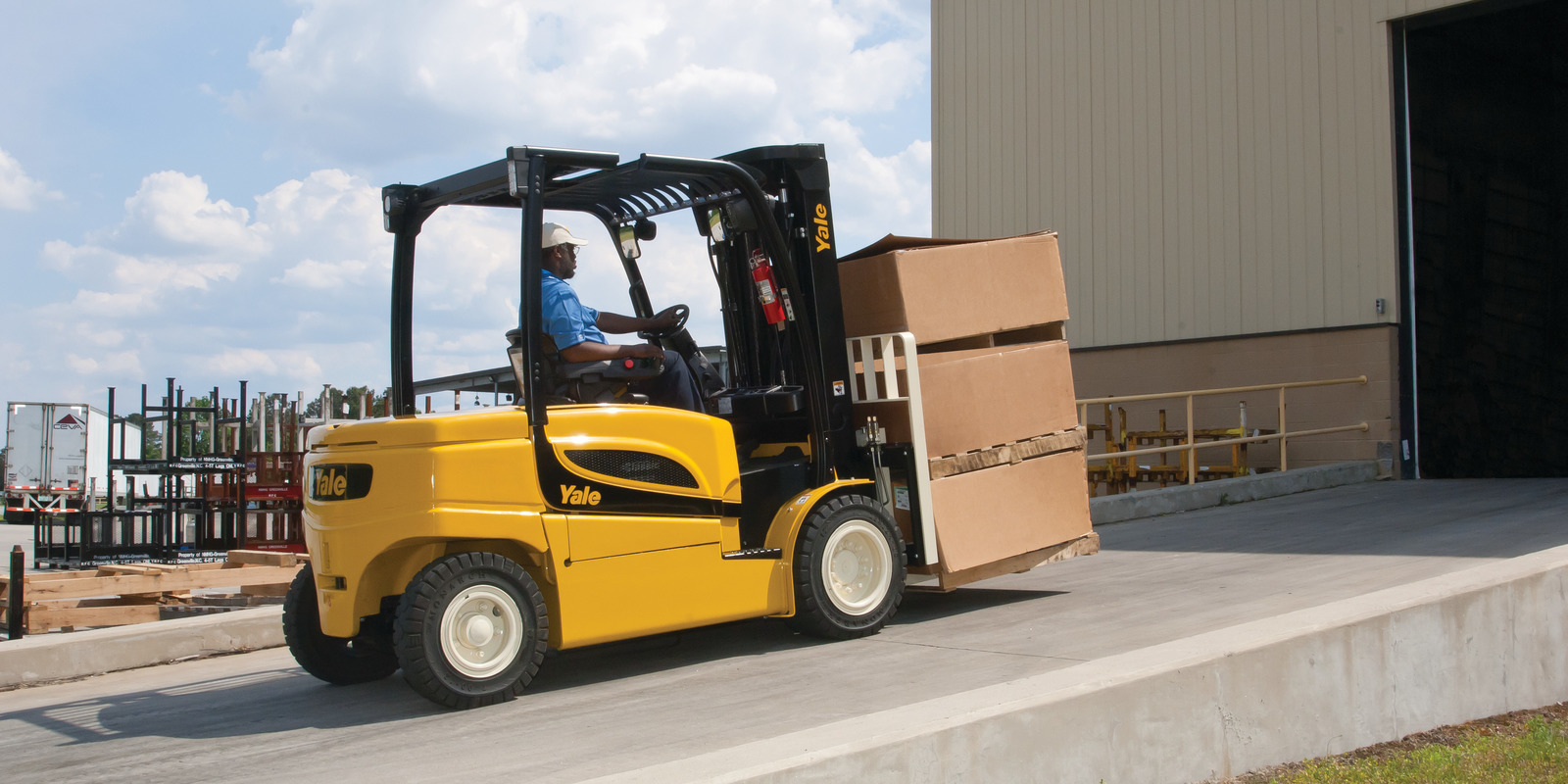
6. Have clear visibility of the work area.
If you can’t see what is ahead, assume someone is there. Always look in your direction of travel, use mirrors, and back up if the load blocks your forward view. And don’t forget to use horns and spotters…they’re there to keep you safe!
7. Use proper footing and handholds, if available, when entering the lift.
Most people think about accidents after they start driving, but slips can happen before you even begin the job. Always use three points of contact when climbing in and out of a lift truck. Avoid jumping off, even if you are in a hurry.
8. Use horns at cross aisles and obstructed areas.
We talked about this earlier, but it’s worth mentioning again. A quick honk can stop an accident before it happens. We recommend that operators always sound the horn at intersections. If your machine is equipped with extra lights or alarms, we recommend using those as well.
9. Watch for pedestrians and observe the speed limit.
People on foot always come first. Make eye contact before moving, and slow down near walkways. Never assume someone sees you, especially if anyone involved is in a rush.
10. Do not give rides or use the forks to lift people.
Forks are designed for loads. If someone needs to be elevated, use an OSHA-approved aerial lift with guardrails, toe boards, and secure connections to the mast. If you need to transport people around your warehouse, use a Taylor-Dunn personnel carrier.
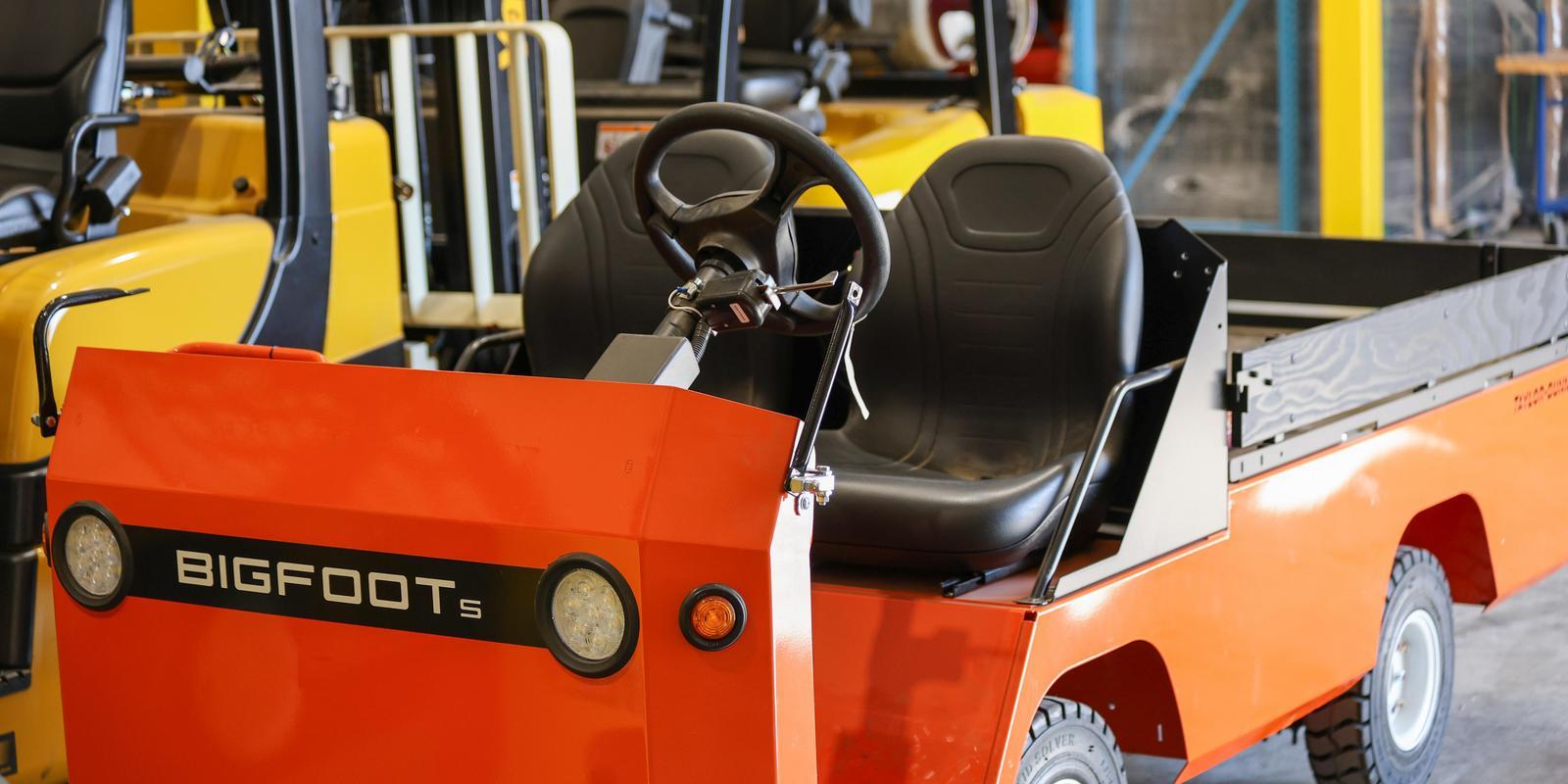
Other Forklift Safety Tips
- Only trained and certified workers may operate a forklift. OSHA requires that every forklift operator complete a documented training program, with refresher courses every three years (or sooner if there is an accident or unsafe use).
- Ensure operators are trained on types of trucks in use. Driving a pneumatic-tire forklift is different from a stand-up reach truck or an electric pallet jack. Your operator’s training should match the machine they use.
- Remove unsafe forklifts from service immediately. Daily inspections are critical. Check brakes, steering, forks, tires, hydraulics, and warning devices. If anything is off, report it and tag the lift truck out.
- Keep forklifts clean. Excess oil, grease, or debris can create slip hazards and mechanical issues. A clean machine will last longer, but it will also keep your facilities safer.
- Repair and maintain per the manufacturer’s recommendations. Preventative maintenance decreases breakdowns and keeps operators safe on the job.
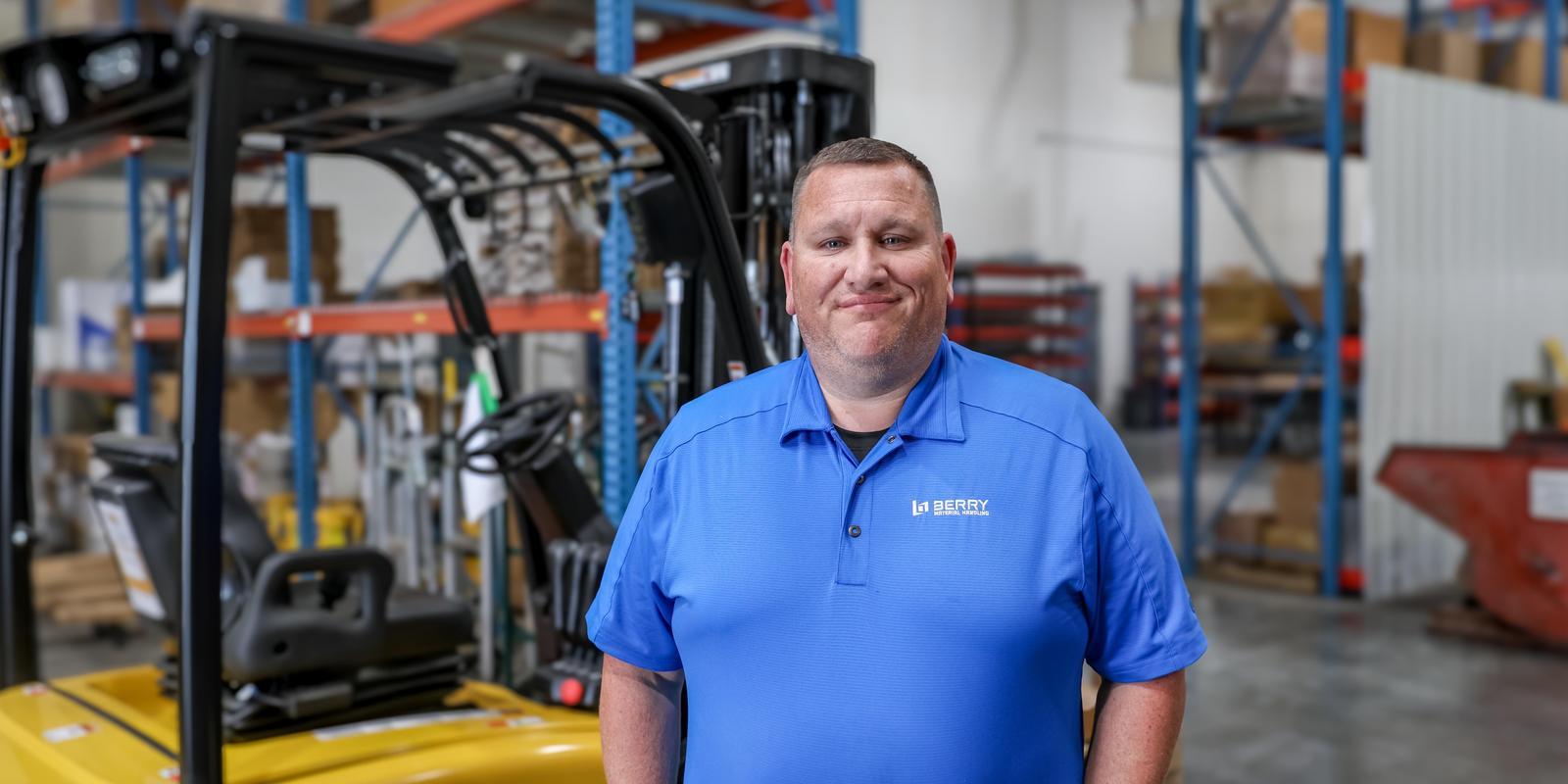
Forklift Operating Training at Berry Material Handling
Forklifts keep your operation moving, but only when they’re used safely. The same rules we covered here are built into our OSHA-compliant training. Berry Material Handling offers on-site certification in Kansas, Oklahoma, Missouri, Texas, and nearby states. Our goal is to make forklift safety simple and convenient for your crew
Contact a Berry Material Handling operating trainer today!

